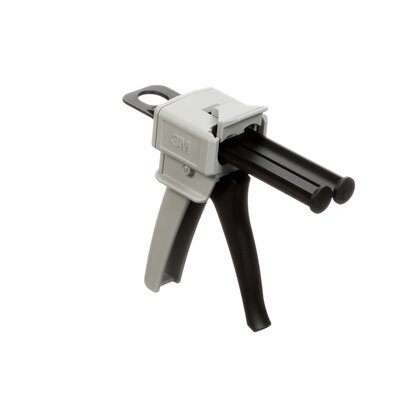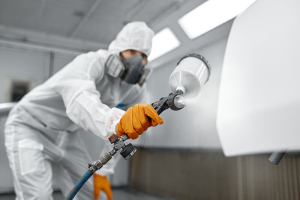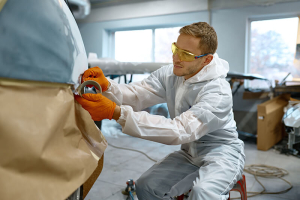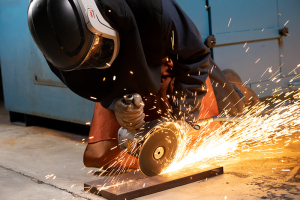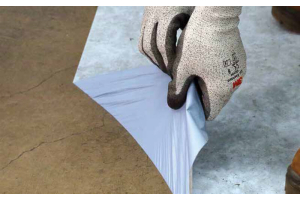Aluminum Bonding Offers Benefits Over Traditional Attachments
Improve Your Product Manufacturing
With Aluminum Bonding
Part 2 of a two-part blog on aluminum bonding
In manufacturing, finding the best materials and the most efficient processes are critical to creating a successful product. With aluminum one of the most frequently-used materials, it's important to understand how it can be attached and which methods are most effective.
Traditionally, manufacturers used point fasteners like rivets, screws and bolts to attach aluminum. But this approach caused issues - weakening the material and creating holes that could leak or cause water damage.
Manufacturers can avoid these issues by using aluminum adhesive bonding on their products. Unlike point fasteners, using adhesives bonds the materials and spreads the stress out to avoid stress concentrations. Products can also be designed so that the adhesive is used to either isolate or transfer the stress loads. This approach is especially useful when bonding two materials with different Coefficient of Thermal Expansion (CTE) rates.
Dealing With Water Intrusion
Depending on the type of product you're manufacturing, water may be a key issue. For products that are exposed to water, you want to ensure that you have as few holes as possible.
Instead of using point fasteners, you can design your products to use adhesive joints. Not only does this avoid having to make holes in your items, you can actually reduce galvanic corrosion by using an adhesive to attach - yet also separate - two different metals. Adhesives are also easier for a less-skilled worker to apply.
Understanding Aluminum's Adhesive Properties
Aluminum is a very good choice when considering using adhesives as a bonding method. It works well with most adhesives, due to its very high surface energy. This allows the adhesive to flow onto its surface, which is very receptive to a variety of bonding types. This is why aluminum is rarely found in its pure state, and instead is alloyed with other materials.
This reactive property creates a protective oxide layer, which forms very quickly when aluminum is exposed to air.
The Oxidation Process
During this process, the active surface of aluminum reacts with the oxygen in the air, creating a passive layer of aluminum oxide. Unlike what you see with steel rust which flakes off, aluminum oxide actually remains and helps protect the surface.
Getting The Best Results From Adhesives
When using adhesives, there are a few key things to remember about the oxide layer. Structural epoxies will adhere well to the oxide layer, but it is so strong that when tested, the oxide layer fails first. The oxide layer attracts moisture, which negatively impacts the bond strength. This weak interfacial layer limits the holding power of structural adhesives and should be removed before bonding.
Preparing Surfaces For Bonding
In order to get the best bonding, you need to properly prepare your surface. Start by cleaning it with acetone to remove any dirt and oil, then abrade the surface with a fine abrasive like the 3M Scotch-Brite 7447 pads. Do a final cleaning with acetone until all debris is removed - you should see bare aluminum. Act quickly after cleaning to bond the materials so that the oxide layer doesn't reform.
Creating A Lasting Bond
These types of aluminum bonds are very strong, and because of these qualities are often seen in the transportation, aerospace and electronics industries.
In addition to adhesives, manufacturers should also consider using foam tapes (like 3M™ VHB™ Tapes). Like adhesives, they need a clean surface but don't require removing the oxide layer. An added benefit is its viscoelastic quality, which allows it to isolate stresses. As a force acts on the bond, it is directed into its core. The core absorbs this, which lessens the stress on the interface between the substrate and the tape.
This application is especially helpful in absorbing vibrations and joining two materials with different CTEs. A good example of this use is when manufacturers bond glass windows to aluminum frames in industrial structural glazing. This requires a strong bond with careful isolation of substrate movement due to thermal cycling.
Have more questions? Post a question to 3M's assembly forum or check out the previous blog in this series for more information about adhesive bonding.
See Why We're The Top Supplier For Industrial, Marine and Safety
30-Second Summary:
- ✔ Creating a strong bond between aluminum and other materials is key to successful product manufacturing.
- ✔ While point fasteners have traditionally been used, adhesives can offer some significant benefits.
- ✔ In addition to avoiding the holes that fasteners create, adhesives can also reduce stress concentrations.
- ✔ The key to getting a strong bond is the proper cleaning and removal of the oxide layer.
- ✔ Manufacturers should consider both adhesives and foam tape for their products. Each offers specific benefits that can improve performance and durability.




